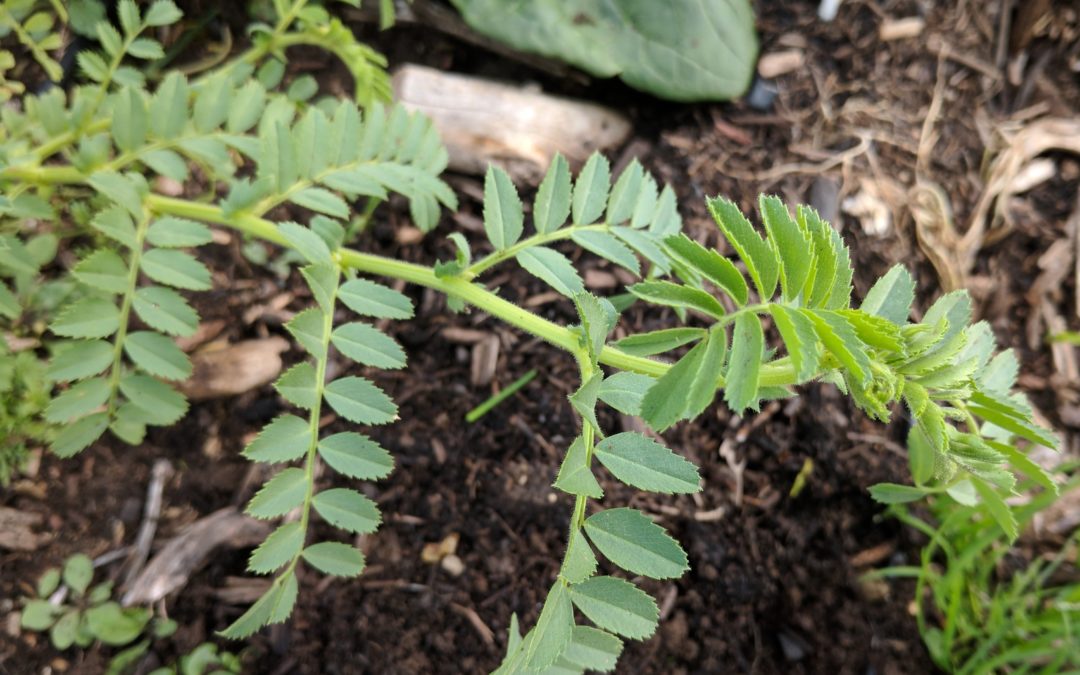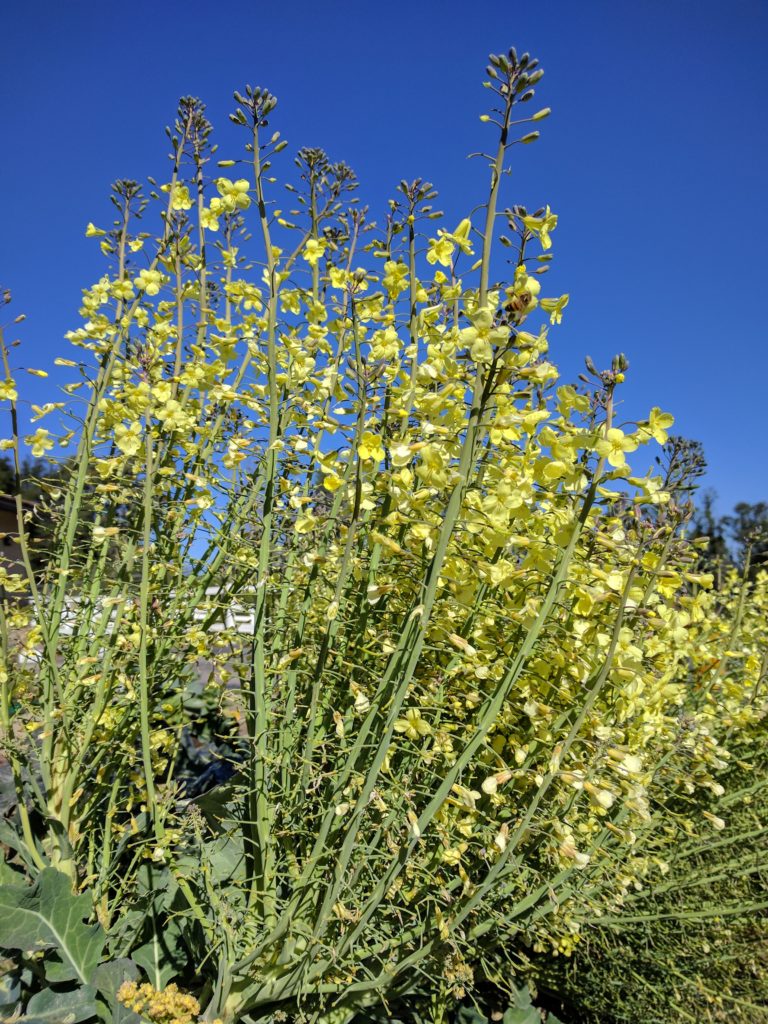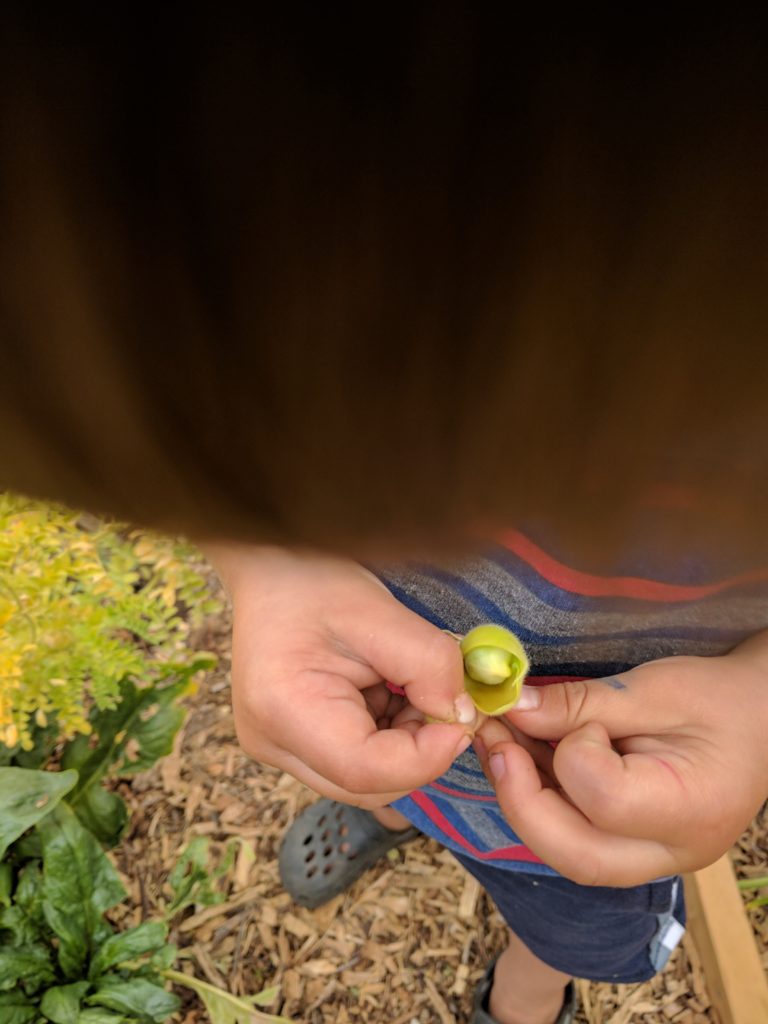I love hummus, so when I saw a garbanzo bean plant at the nursery last April I bought it. Rookie mistake. Just because you see a plant at the nursery doesn’t mean that now is a good time to buy and plant it.
Different vegetable plants prefer to grow in different seasons, of course. And contrary to the beliefs of people who don’t live here, we do have seasons in Southern California. Sow cauliflower in May and see how well it does.
But it had been a fine spring day, and I had been infected with the fever of that warming season. (Here in March it is that warming season again — beware!) Forgetting to consider when garbanzo bean plants like to grow in Southern California, I bought it and put it in the ground among my other vegetables. Soon it formed bean pods. Excited, I squeezed a pod, but it dented. It was empty. All of the other pods were hollow too. Then in the heat of summer, the plant started to brown and eventually, it died. I forgot about it.
Then a couple months ago I heard someone mention that farmers in California’s Central Valley grow garbanzo beans as a winter crop. Duh, Greg. Beans are not beans. Some grow in summer, like black beans or pinto or green beans, but some grow in winter here, like fava beans. I should have done my homework. Once I did, I learned that actually some other farmers do grow garbanzos in the summer, but this is in places like Morro Bay, where summers are cool and foggy — in other words, where summers are like our winters.
Oh well. Lesson learned, again.
We shouldn’t be too hard on ourselves for making this timing mistake, right? I forgive myself for forgetting that lesson primarily because of the way grocery stores are stocked. Judging by the appearance of grocery store shelves, there are no seasons. How should I know when garbanzo beans are grown in my area? I only see them in cans, 365 days a year. And how should I know when cauliflower is grown in my area? It’s fresh on the shelves 365 days a year.
Grocery store shelves may carry all fruits and vegetables all of the time, but your garden won’t. Unless it’s warm like summer, tomatoes won’t ripen. Unless it’s cool like winter, broccoli will shoot for the sky and become a yellow mass of flowers that is candy for the bees before you can say, Wait, please!
Wait . . . sometime in January, I noticed little plants popping up that weren’t my usual weeds. As they grew, I began to recognize their leaves as those of garbanzo plants. How did that happen? All of the pods had been hollow. The plant had died. Who knows? Nature has forgiven me, too.
That photo at the very top shows foliage of one of the garbanzo bean plants now, pretty happy among spinach and winter grass weeds, growing in their season of cool. If the pods are not hollow this time, I have a dream: I’m going to use the beans to make hummus mixed with avocado and spread it on sourdough toast.
From now on, let’s grow our vegetables at the right time the first time. See my post, “Which vegetables can I plant now in Southern California?”
UPDATE:
My dream of making hummus has been dashed by my sons, who discovered how good garbanzos taste fresh off the plant. At least the pods weren’t hollow.






I appreciate the work, experience, and sharing you put together in these posts for readers’ benefit. I’m soaking it in.
Thanks a lot for the kind words, Jeff.
I love these posts! I’m eager to read about what to plant this month. My vegetable garden is calling me! When should I plant my corn? My pumpkins?
Your comments about the sourdough toast made me smile 🙂
Thanks, Renee! As for corn and pumpkins, I’ve always been successful sowing them starting in late March.
The only caveat is that pumpkin seedlings are really attractive to earwigs and pill bugs, which proliferate in early spring. If earwigs and pill bugs inhabit your garden, then be prepared for battle (my weapon of choice is chickens) or wait until June when it’s hot and they are no longer around as much.
Again, you teach us something that will benefit our gardens so we can enjoy yummy produce. I will definately be more careful about WHEN I plant.